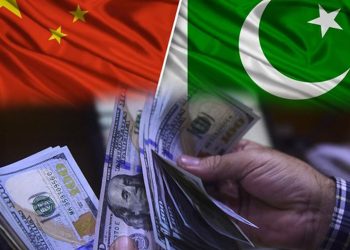The country’s deteriorating political scenario weighed on investors’ concerns as the Pakistani rupee fell to a record low of 298.91 against the US dollar during interbank trade on Thursday.
The currency was over 3% weaker at 1:15 pm, an absolute loss of Rs8.69.
The precipitous drop comes after the rupee hit a record low of 290.22 against the US dollar in the interbank market on Wednesday.
Pakistan has been rocked by violent rioting caused by the arrest of Pakistan Tehreek-e-Insaaf (PTI) leader Imran Khan on Tuesday, which has exacerbated instability at a time of acute economic crisis and a delay in the International Monetary Fund (IMF) bailout.
Protesters assaulted military installations and ransacked the home of a key army general in the eastern city of Lahore, according to video footage.
Protesters have also attacked and set fire to other state buildings and assets. At least five people have died as a result of the violence.
“Ongoing political uncertainty is driving market depreciation,” said Zafar Paracha, General Secretary of the Exchange Companies Association of Pakistan (ECAP).
“However, this should not be the case with currency,” he explained.
According to the currency broker, market participants have been profiting from similar incidents since last year.
“We have not seen such financial uncertainty in decades,” he said, asking authorities to take such activities seriously.
Globally, the US dollar fell for a second day versus the yen on Thursday, weighed down by lower US Treasury yields after slower inflation gave traders more confidence that the Federal Reserve was done raising interest rates.
After headline CPI fell below 5% for the first time in two years, the 10-year Treasury yield, which the dollar-yen pair tends to watch, fell to 3.4252% in Tokyo trading, extending an 8 basis point drop from overnight.
The dollar index, which compares the greenback to a basket of six major currencies, including the yen, fell 0.05% to 101.36.
Oil prices, a major currency indicator, recovered on Thursday after falling by more than a dollar a barrel the day before, boosted by improved fuel demand statistics from the United States, the world’s largest oil user.






